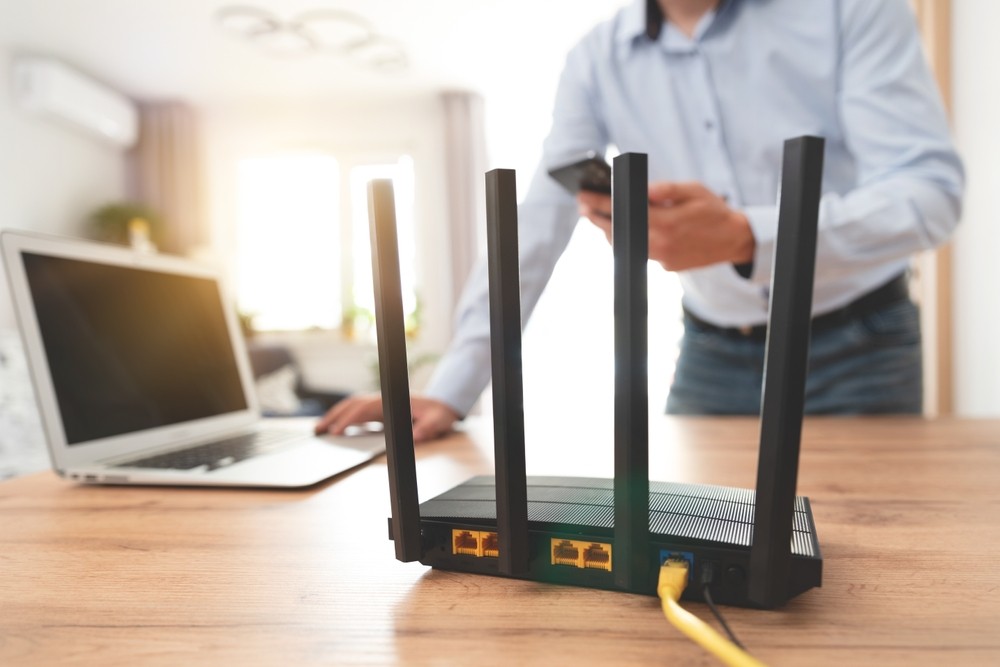When it comes to setting up a home network, selecting a wireless router that balances reliability and speed without overspending is crucial. The right router can vastly improve your internet experience, ensuring that streaming, gaming, video conferencing, and smart home devices work seamlessly.
Understanding Wireless Standards
Before diving into specific models or brands, it’s essential to grasp the basics of wireless standards. Currently, Wi-Fi 6, also known as 802.11ax, is the latest standard, offering significant improvements over its predecessor, Wi-Fi 5 (802.11ac). Wi-Fi 6 provides faster data rates, increased capacity, and improved performance in dense environments. If you have multiple devices connected to your network, a Wi-Fi 6 router could provide noticeable speed and efficiency improvements.
However, Wi-Fi 5 still offers excellent performance for most homes, especially in terms of cost-effectiveness. For those not needing the absolute latest technology, Wi-Fi 5 routers might provide the balance between cost and capability.
Single-Band, Dual-Band, and Tri-Band Routers
Understanding frequency bands is essential for choosing the right router. Frequency bands refer to the range of radio frequencies that the wireless router operates in, affecting both speed and range.
- Single-Band Routers: These use the 2.4GHz frequency, which is sufficient for light browsing and connecting a few devices. They tend to be cheaper but may be unsuitable for environments with many devices or where high throughput is necessary.
- Dual-Band Routers: These offer both 2.4GHz and 5GHz frequencies. The 2.4GHz band provides a broader range, albeit at slower speeds, while the 5GHz band offers faster speeds but with a shorter range. Dual-band routers provide flexibility and are ideal for most households.
- Tri-Band Routers: Featuring an additional 5GHz band, tri-band routers are designed for heavy internet usage with multiple simultaneous connections. They are usually more expensive and are suitable for tech-savvy users or smart homes with many connected devices.
Key Features to Consider
While understanding frequency and bands is fundamental, several features differentiate routers in terms of performance and price.
Quality of Service (QoS)
QoS is a feature that prioritizes internet traffic for specific applications or devices. For instance, if you frequently stream videos or play online games, you can set your router to prioritize this traffic, reducing latency and buffering. Many mid-range routers offer QoS, making them a practical choice without needing a premium model.
Beamforming
Beamforming is a technology that focuses the Wi-Fi signal directly to a device rather than broadcasting in all directions. This can significantly boost a device’s speed and range, particularly in larger homes. Though more common in modern routers, ensuring your chosen model includes beamforming can enhance the overall wireless experience.
MU-MIMO
Multi-User, Multiple-Input, Multiple-Output (MU-MIMO) technology allows routers to communicate with multiple devices simultaneously. This is particularly beneficial if you frequently have several devices connected at once, minimizing congestion and enhancing speed and reliability for each device.
Security Features
With rising cybersecurity concerns, selecting a router with robust security features is paramount. Look for routers that support the latest encryption standards (such as WPA3) and provide features like guest networks, parental controls, and automatic firmware updates.
Mesh Networking
If you live in a large or multi-story home, mesh systems can provide seamless coverage without dead zones. While traditionally more expensive, the market now offers cost-effective mesh options that maintain balance between coverage, speed, and price.
Top Budget-Friendly Router Recommendations
Navigating the wide selection of wireless routers can be daunting. Below is a look at some routers that provide a solid blend of reliability and speed without breaking the bank.
TP-Link Archer A7
A staple in many households, the TP-Link Archer A7 offers dual-band capability with speeds up to 1750 Mbps. It comes with an intuitive app-based management system and robust QoS features, making it a reliable pick for families. With support for Alexa and a guest network feature, this router offers plenty of value.
NETGEAR R6700 Nighthawk AC1750
Known for its impressive coverage and strong signal, the Nighthawk AC1750 offers excellent speed across its 5GHz band. It supports up to 25 devices simultaneously, making it suitable for busy homes. The router also features parental controls and smart connect technology, optimizing your network based on device requirements.
ASUS RT-AC66U B1
This dual-band router offers speeds up to 1750 Mbps and comes with beamforming and MU-MIMO technology. ASUS routers are known for their robust security features, and the RT-AC66U B1 is no exception with support for WPA3 encryption and strong parental controls. The user interface is highly intuitive, simplifying settings management.
Linksys EA7300
Another excellent option, the Linksys EA7300, supports speeds up to 1750 Mbps and includes MU-MIMO technology for simultaneous streams. This router is ideal for medium-sized homes, providing reliability and performance. The Linksys app allows for easy network management, such as prioritizing certain devices and setting parental controls.
Installation and Optimization Tips
Once you’ve chosen your router, installation and optimization are crucial to ensure optimal performance. Position your router centrally and elevated, away from metal objects and dense walls, to maximize coverage. Regularly update your router’s firmware to secure the latest features and security updates, and utilize QoS settings to prioritize traffic as per your usage requirements.
Consider using apps like Wi-Fi Analyzer to scan local networks and identify the least congested channel for your router. If bandwidth is a concern, set up guest networks to separate low-priority devices and users from your primary network, ensuring your smart TVs or gaming consoles receive prioritized traffic.
Balancing reliability, speed, and cost when choosing a wireless router involves understanding your specific needs and home environment. By leveraging advanced features like QoS, beamforming, and MU-MIMO, you can elevate your internet experience without overspending on unnecessary premium features. With a bit of research and some configuration know-how, achieving a robust and efficient home network is well within reach.



